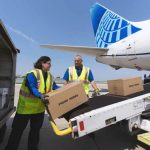Ensuring the Welfare of Live Animals in Air Cargo
In this article, we explore the latest trends and innovations in the industry, examining how it is adapting to meet the challenges and opportunities of the 21st century. We also gained insights from three industry leaders: Elisabeth Oudkerk, SVP Cargo Sales and Network Planning at Qatar Airways; Kirsten de Bruijn, Executive Vice President Cargo, WestJet Cargo; and Or Zak, Chief Commercial Officer at Challenge Group.
Live animal transportation by air has been an essential component of the aviation industry for decades, playing a pivotal role in the food supply chain, the pet trade, and the conservation of endangered species. This remarkable mode of transport offers unparalleled speed and efficiency, enabling animals to traverse vast distances with minimal stress and ensuring their well-being.
However, the practice of live animal transportation by air is not without its challenges. Animals can be vulnerable to injuries and illnesses during transit, and ensuring their safety and welfare is paramount. To address these concerns, the aviation industry has developed specialized procedures and regulations, including the International Air Transport Association’s (IATA) Live Animal Regulations (LAR).
These regulations set rigorous standards for every aspect of live animal transportation, from initial preparation to in-flight care and ethical handling. Airlines and stakeholders worldwide adhere to these guidelines to ensure the humane and secure transportation of animals.
Live animal transportation by air has undergone significant changes in recent years, driven by growing demand for safe and efficient journeys, advanced animal welfare practices, and heightened environmental concerns.
In this article, we explore the latest trends and innovations in the industry, examining how it is adapting to meet the challenges and opportunities of the 21st century. We also gained insights from three industry leaders: Elisabeth Oudkerk, SVP Cargo Sales and Network Planning at Qatar Airways; Kirsten de Bruijn, Executive Vice President Cargo, WestJet Cargo; and Or Zak, Chief Commercial Officer at Challenge Group.
Advancements in Animal Welfare and IATA Regulations
Recent years have witnessed remarkable advancements in animal welfare and scientific understanding, driving updates to the IATA Live Animals Regulations (LAR). According to Elisabeth Oudkerk, SVP Cargo Sales and Network Planning at Qatar Airways, these changes stem from collaborative efforts within the industry. She emphasizes that “The Live Animals and Perishables Board, which includes Qatar Airways’ representation, conducts comprehensive reviews to ensure that the LAR reflects the latest developments and animal welfare concerns.”
The 49th edition of the LAR, which came into effect in 2023, showcases several key improvements. Oudkerk adds, “It now incorporates enhanced animal welfare standards based on the latest scientific research, addressing the handling, housing, and care of animals during transportation. Additionally, the regulations include species-specific guidelines, recognizing the unique requirements of different animals. To ensure compliance, the regulations emphasize the importance of training for all personnel involved in live animal transportation.”
Challenges and Industry Responses
In today’s global context, live animal transportation presents unique challenges and concerns. Kirsten de Bruijn, Executive Vice President Cargo, WestJet Cargo, highlights some of these challenges. She points out that “Maintaining proper temperature conditions during transport is a critical concern, especially for animals with specific temperature requirements.” To address this issue, industry stakeholders are investing in advanced climate-controlled facilities and monitoring systems.
De Bruijn also emphasizes the importance of reducing stress on animals during transportation and ensuring gentle handling. She mentions, “Airlines and handlers are implementing training programs and using low-stress handling techniques to mitigate these challenges.” Staying updated and complying with evolving regulations, such as those related to animal welfare and sustainability, can be demanding. She notes, “Industry associations and airlines collaborate to ensure compliance with these regulations.”
Environmental Sustainability Efforts
As the aviation industry responds to growing concerns about the environment and sustainability, it is taking steps to reduce its carbon footprint when transporting live animals. Or Zak, Chief Commercial Officer at Challenge Group, outlines some of these efforts. He explains, “Airlines optimize flight routes to reduce fuel consumption and emissions, thereby minimizing the carbon footprint associated with transporting live animals.”
Zak also highlights investments in fuel-efficient and quieter aircraft, like the 737-MAX, which reduce noise levels, benefiting both the environment and the well-being of animals. He mentions that “Cargo compartments are also being designed for improved air circulation and temperature control, reducing excess energy consumption.”
Challenge Group adopts lighter ULDs (Unit Load Devices) to reduce fuel consumption and emissions, aligning with the industry’s broader sustainability goals. Zak adds, “The company is also actively involved in the relocation of endangered species to their natural habitats, reflecting a commitment to environmentally responsible practices. Furthermore, Challenge Group adheres to an ethics policy that prohibits the transportation of animals for laboratory use, research, or circus shows.”
Qatar Airways’ Commitment to Environmental Sustainability
Oudkerk underscores the airline’s dedication to environmental sustainability. She affirms, “Qatar Airways is committed to contributing to the environment and is committed to sustainability. We operate one of the youngest fleets in the sky, prioritizing efficient designs to control carbon emissions.”
Oudkerk continues, “Our modern and fuel-efficient fleet generates lower emissions and less noise. We invest in engineering improvements for airframes and engines to reduce drag and improve efficiency. These initiatives align with our goal to minimize air cargo’s environmental impact, incorporating innovative technologies and waste reduction.”
Passengers and customers can now offset their flight emissions through high-quality carbon credits, a practice credited under the International Civil Aviation Organisation (ICAO) criteria. Qatar Airways invests in renewable energy projects, actively reducing carbon emissions.
Additionally, Qatar Airways recently signed an agreement with Shell to source 3000 metric tonnes of neat SAF at Amsterdam Schiphol Airport. This demonstrates their commitment to using at least a 5 percent SAF blend, contributing to the industry’s goal of achieving 10% sustainable aviation fuel use by 2030.
Qatar Airways is proactively procuring SAF from certified sources, in alignment with international sustainability criteria recognized by ICAO and state regulations. These measures, combined with innovative technologies and waste reduction, enhance operational efficiency, and minimize environmental impact in the air cargo industry.
Role of Technology in Ensuring Animal Safety
Technology plays a pivotal role in ensuring the safety and well-being of animals during air transportation. Oudkerk points out that “Major journey milestones of animals traveling as cargo with the airline can be tracked on their website.” She adds, “Pet cards are provided to customers containing a photo of their pet at the animal center, offering updates on their well-being during transit via the hub in Doha.”
Oudkerk also explains that “Digital trackers are used to monitor the vitals of animals and their well-being, with Qatar Airways maintaining an extended list of approved tracking devices.” She highlights that “These trackers provide real-time data on the animals’ conditions, enabling immediate intervention if necessary.” The use of tracking technology has evolved in recent years, with new devices regularly added to improve monitoring and ensure the safety of live animal cargo.
Regulations for Exotic and Endangered Species
With the increasing demand for international transportation of exotic and endangered species for conservation and breeding programs, regulations have adapted to meet the unique requirements and challenges associated with these specialized shipments.
De Bruijn explains that regulations now specify specialized handling, care, and transportation conditions for these species, including secure enclosures, veterinary oversight, and adherence to species-specific guidelines.
For exotic and endangered species, compliance with the Convention on International Trade in Endangered Species of Wild Fauna and Flora (CITES) is essential for international shipments. Airlines and authorities work closely to ensure compliance with CITES regulations.
De Bruijn notes, “Stringent documentation and permitting processes are in place to verify the legal and ethical sourcing of these animals, preventing illegal wildlife trafficking.”
Zak adds that there’s a focus on non-standard crating for rare species, and specialized procedures are implemented to safeguard the animals and the aircraft’s integrity. He emphasizes that “Challenge Group is committed to environmentally responsible practices and adheres to ethics policies that prohibit the transportation of animals meant for laboratory use, research, or circus shows.”
From advancements in animal welfare to environmental sustainability efforts, we’ve examined the industry’s evolution in response to growing demands for safe and ethical transport. Through adherence to stringent regulations, investments in sustainable practices, and technological innovations, the air cargo sector is forging a path toward compassionate and responsible growth.
As we navigate these skies, one thing is clear: the future of live animal transportation holds promise, as industry leaders and stakeholders come together to ensure the welfare of all creatures who take to the air.














